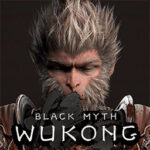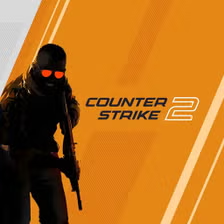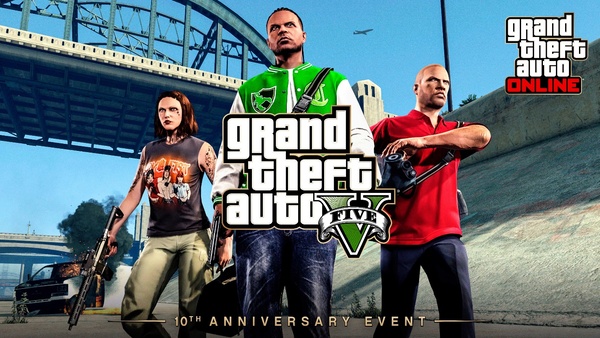Fortnite: The Cultural Phenomenon that Changed Gaming Forever
Since its launch in 2017, Fortnite has become more than just a game—it's a cultural phenomenon. Created by Epic Games, Fortnite has taken the world by storm, attracting millions of players across different platforms and transforming the way we think about battle royale games. With its unique blend of building mechanics, colorful graphics, and continuously evolving content, Fortnite has stayed at the forefront of the gaming industry and continues to dominate the global scene.
From its humble beginnings as a survival mode to its current state as a free-to-play battle royale juggernaut, Fortnite has evolved dramatically. Whether it’s the popular Battle Royale mode, the regular seasonal updates, or the high-profile collaborations with major entertainment franchises, Fortnite has reshaped the gaming world and created an entirely new style of gaming experience.
This article explores the origins of Fortnite, the mechanics that make it unique, the reasons behind its massive success, and how it has become a defining part of modern gaming culture.
1. The Origins of Fortnite: From Save the World to Battle Royale
Fortnite’s journey began in 2011 when Epic Games, known for developing successful franchises like Unreal Tournament and Gears of War, announced the development of a new survival game. The project, originally dubbed Fortnite: Save the World, was envisioned as a cooperative tower defense game where players would fight against zombie-like creatures while building defenses.
The Birth of Save the World Mode
In Save the World, players were tasked with defending against waves of enemies by gathering resources and building structures, a mechanic that would later become central to Fortnite’s success. While Save the World did receive a positive reception during its early access phase in 2017, it wasn’t until the introduction of the Battle Royale mode that Fortnite really gained traction.
The Fortnite Battle Royale Phenomenon
In late 2017, Epic Games noticed the growing popularity of the battle royale genre, particularly with PlayerUnknown’s Battlegrounds (PUBG). In response, the company decided to introduce a free-to-play Battle Royale mode, Fortnite: Battle Royale, as an update to Save the World. Unlike its predecessor, the Battle Royale mode was designed to be fast-paced, accessible, and action-packed, with up to 100 players fighting to be the last one standing.
Upon its release in September 2017, Fortnite: Battle Royale exploded in popularity. The combination of a free-to-play model, vibrant graphics, and fun, unpredictable gameplay made it a hit with gamers of all ages. The game rapidly gained millions of players, and the rest, as they say, is history.
2. Core Gameplay Mechanics: Building, Shooting, and Surviving
At the heart of Fortnite is its Battle Royale mode, where 100 players are dropped onto an ever-shrinking map and must compete to be the last one standing. Players gather resources, build structures, and engage in intense gunfights, all while avoiding the deadly storm that constantly closes in on them.
Building Mechanic: A Unique Twist
What sets Fortnite apart from other battle royale games is its unique building mechanic. Unlike traditional battle royale games where players rely solely on weapons and equipment, Fortnite players can harvest materials like wood, brick, and metal from the environment to create structures. These materials can be used to build walls, ramps, and forts, providing players with a significant tactical advantage.
-
Resource Gathering: Players can break down objects in the environment, such as trees, rocks, and buildings, to collect materials. These resources are then used to build defensive structures or elevated platforms to gain the high ground in combat.
-
Building Types: The game features different types of structures, including walls, ramps, floors, and roofs. Quick and strategic building can be the difference between survival and elimination, especially during intense firefights.
This unique feature gives Fortnite a dynamic aspect that separates it from other battle royales. The ability to rapidly construct walls or stairs during combat allows for greater flexibility and creativity in battles.
Battle Royale Mode: Survival of the Fittest of Fortnite
The Battle Royale mode follows the classic formula of 100 players being dropped onto a large map where they must scavenge for weapons, items, and resources. As time passes, a deadly storm closes in on the players, shrinking the playable area and forcing everyone to converge in a smaller space. The last player or team standing wins the match.
-
Weapons: Fortnite offers a wide variety of weapons, from common pistols to rare sniper rifles, assault rifles, and shotguns. Players can also find healing items like bandages and shields to help recover health during the match.
-
The Storm: A key mechanic in Fortnite is the storm, which gradually shrinks the map, forcing players into closer proximity. Players caught outside the storm take damage over time, making it essential to stay within the shrinking play zone.
-
Solo, Duos, and Squads: Players can choose to compete solo, with a partner (duos), or in a team (squads). Each mode brings a unique dynamic, with solo requiring individual skill and teamwork becoming essential in duos and squads.
Additional Modes: Creative and Team Rumble of Fortnite
Beyond the Battle Royale mode, Fortnite also offers various alternative modes, such as Creative Mode and Team Rumble.
-
Creative Mode: This mode allows players to create their own maps and game modes using the same building mechanics. Players can build structures, design custom challenges, and share their creations with others.
-
Team Rumble: A more casual mode, Team Rumble features two teams of 50 players, and the goal is to reach a certain number of eliminations. Players respawn after being eliminated, so the focus is on action rather than survival.
3. The Power of Seasonal Content and Updates of Fortnite
One of the reasons for Fortnite’s enduring popularity is its constant evolution through seasonal updates. Each season of Fortnite brings new content, challenges, and changes to the map, keeping the game feeling fresh and engaging for both new and returning players.
Seasonal Themes and New Content
Every season of Fortnite typically comes with a new theme, and often includes new locations, characters, skins, and cosmetics. The seasons usually run for around 10 weeks and are often tied to major events or collaborations.
-
Seasonal Events: Fortnite regularly hosts in-game events that are tied to holidays like Halloween, Christmas, and New Year’s. These events often bring limited-time modes, special cosmetics, and unique challenges.
-
New Items and Weapons: With every season, Fortnite introduces new items, weapons, and mechanics. Some of these additions become permanent, while others are only available for a limited time.
-
Map Changes: The map of Fortnite evolves with each season. New areas are added, existing locations are altered, and the environment itself can change dramatically. These map changes often tie into the overarching narrative of the season.
The Battle Pass: A Rewarding System
The Fortnite Battle Pass is one of the game’s most successful features. Players can purchase the Battle Pass for a set fee each season, which unlocks exclusive challenges and rewards as they progress. These rewards include skins, emotes, back bling, pickaxes, and other cosmetics that allow players to customize their character.
-
Free and Paid Tiers: The Battle Pass has both free and paid tiers. Free-tier players can unlock some rewards, but the paid Battle Pass unlocks a significantly larger pool of exclusive items. Players can also earn V-bucks (the in-game currency) through the Battle Pass to help them purchase future passes or cosmetics.
4. Collaborations and Crossovers: Expanding Fortnite's Universe
Perhaps one of Fortnite’s most unique and innovative features is its constant stream of collaborations with major entertainment franchises. Epic Games has partnered with everyone from Marvel to Star Wars, adding new skins, limited-time game modes, and in-game events that tie into these franchises.
High-Profile Crossovers
-
Marvel: Fortnite has teamed up with Marvel to bring in fan-favorite superheroes like Iron Man, Spider-Man, and Captain America. The collaboration often includes special challenges, skins, and even temporary game modes based on the Marvel universe.
-
Star Wars: Fortnite also introduced a Star Wars crossover, which featured exclusive skins for characters like Kylo Ren and Rey, as well as limited-time lightsaber weapons.
-
Concerts and Live Events: Beyond traditional crossovers, Fortnite has hosted virtual concerts, such as those featuring Travis Scott and Marshmello. These live events are in-game experiences where players can watch performances or participate in interactive elements within the game world.
In-Game Concerts and Events
Fortnite has broken new ground by hosting live, in-game events such as concerts, cinematic events, and live story developments. The game has hosted several high-profile concerts, including performances by Travis Scott and Marshmello, attracting millions of players from around the world. These events were not just concerts, but fully interactive experiences, allowing players to dance, interact, and explore during the show.
5. Fortnite’s Influence on the Gaming Industry and Pop Culture
The impact of Fortnite extends beyond the gaming world. Fortnite has influenced mainstream media, pop culture, and even social dynamics in the real world. From viral dances and memes to sponsorships and partnerships with major brands, Fortnite has become a cultural touchstone.
Building a Global Community
Fortnite has brought players from all walks of life together in a way few other games have. With its cross-platform play, players can compete together across consoles, PCs, and mobile devices. The game has built a global community that regularly interacts through social media, streaming platforms like Twitch, and forums.
-
Esports and Streaming: Fortnite has become a major esport, with tournaments offering huge prize pools. The game has also been a favorite among streamers, with players like Ninja becoming household names.
-
In-Game Social Space: Beyond gameplay, Fortnite serves as a social hub where friends can meet, chat, and play together. The game's cross-platform functionality allows friends to stay connected regardless of their device.
Conclusion: Fortnite’s Lasting Legacy
Fortnite has done more than just change the battle royale genre—it has redefined the way we think about games. Its blend of building mechanics, constant updates, and collaborations with popular culture has made it one of the most influential games in history. Fortnite has proven that a game can be both a competitive experience and a social platform, engaging players of all ages and backgrounds.
Whether you’re participating in a live concert, building your own fortress, or engaging in an epic battle to be the last one standing, Fortnite provides a unique and ever-evolving experience. As it continues to push the boundaries of what a game can be, Fortnite has cemented its place in the pantheon of gaming legends.


























